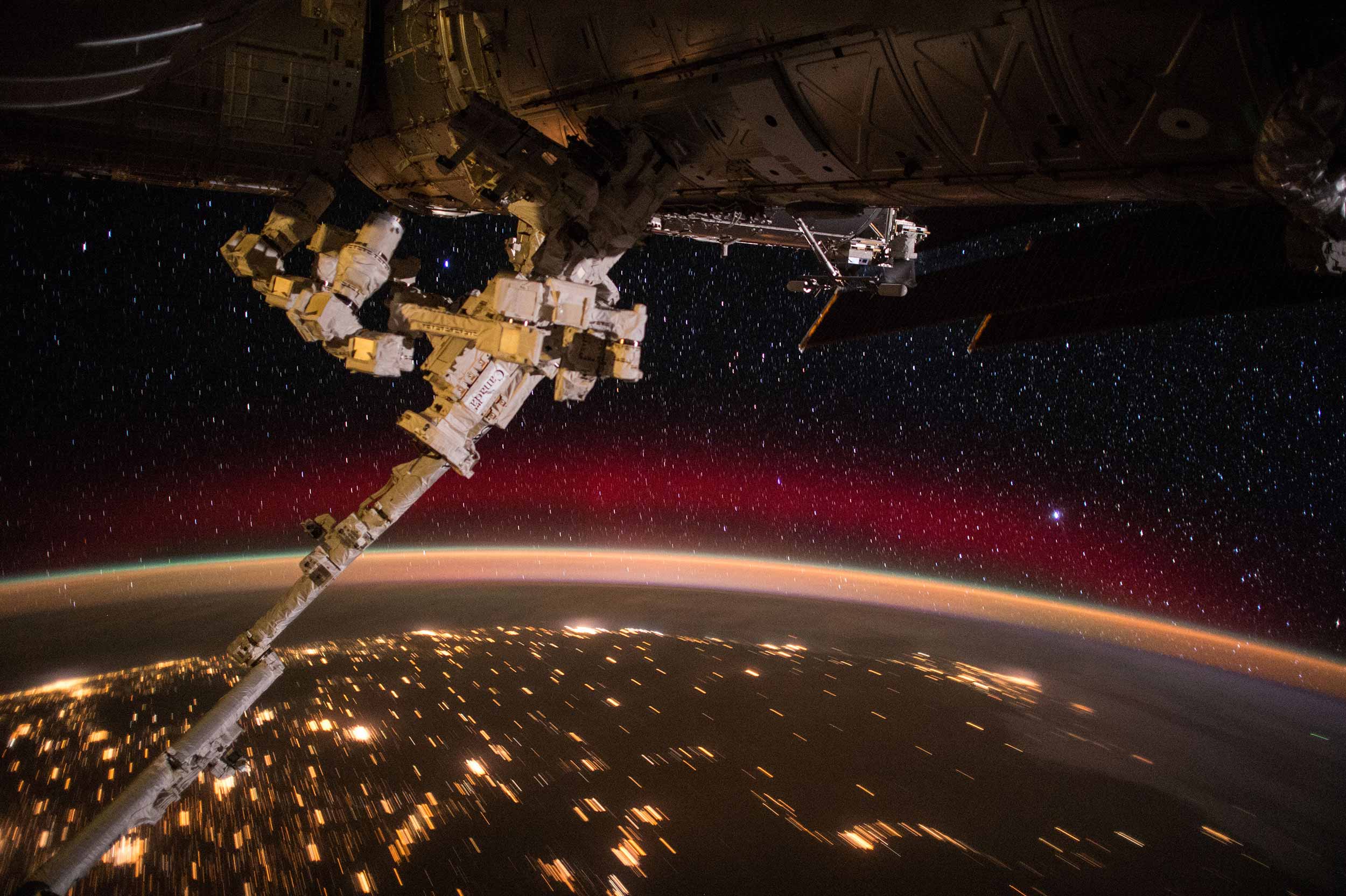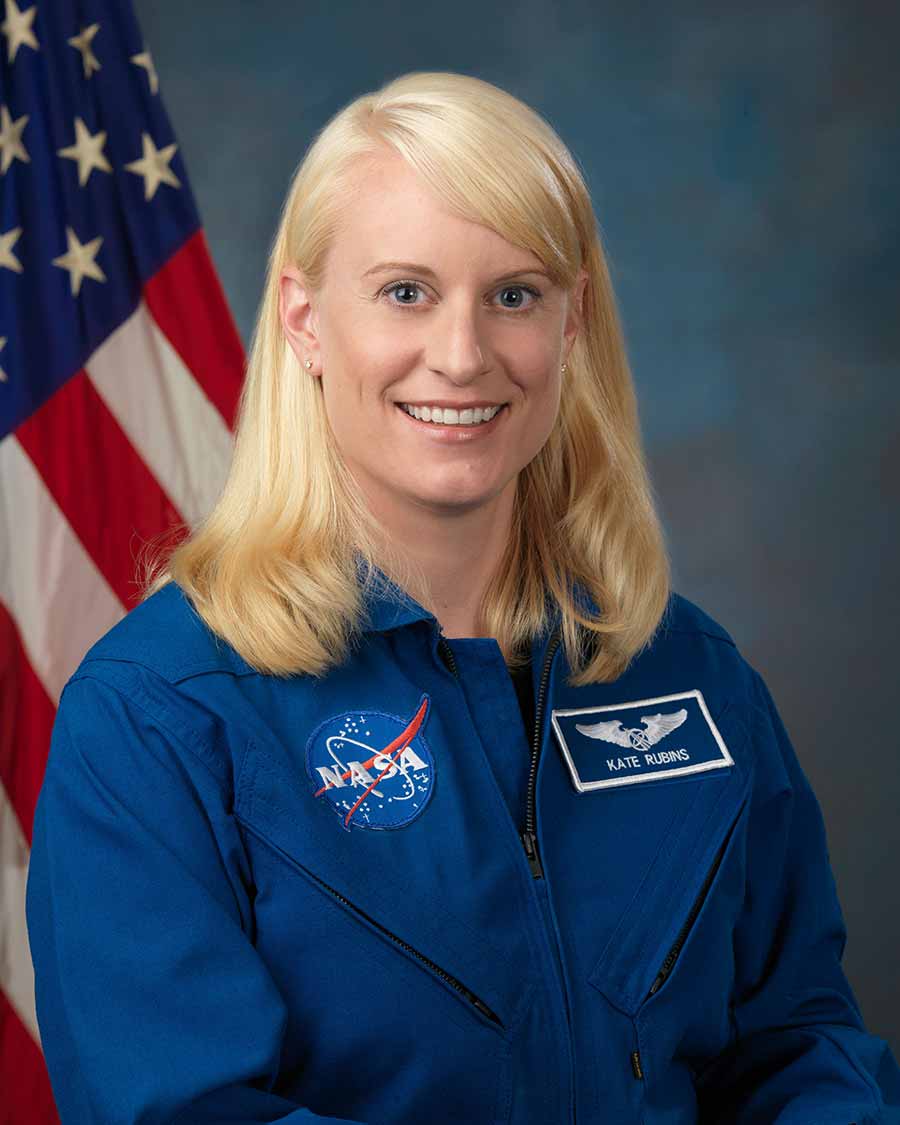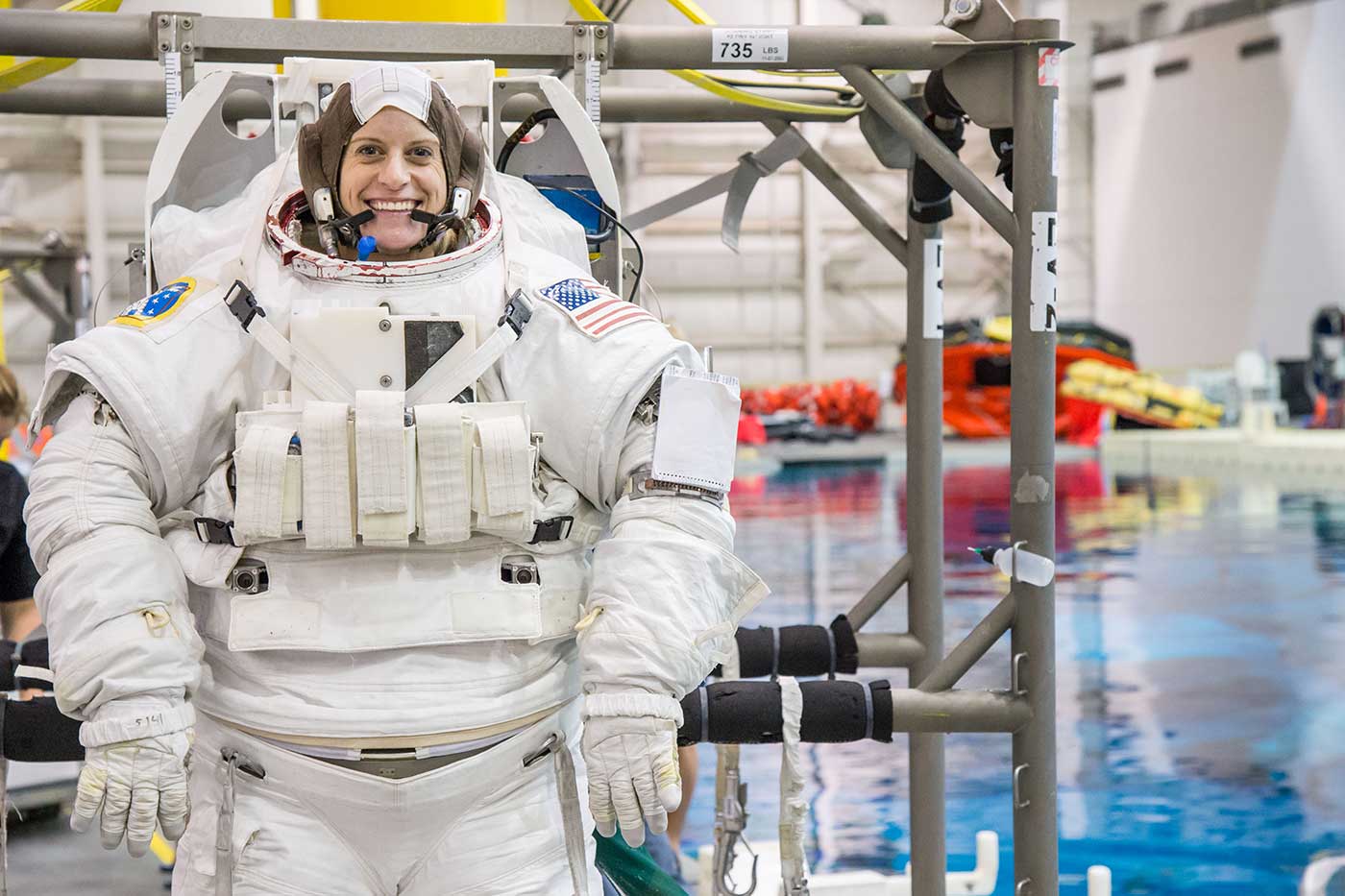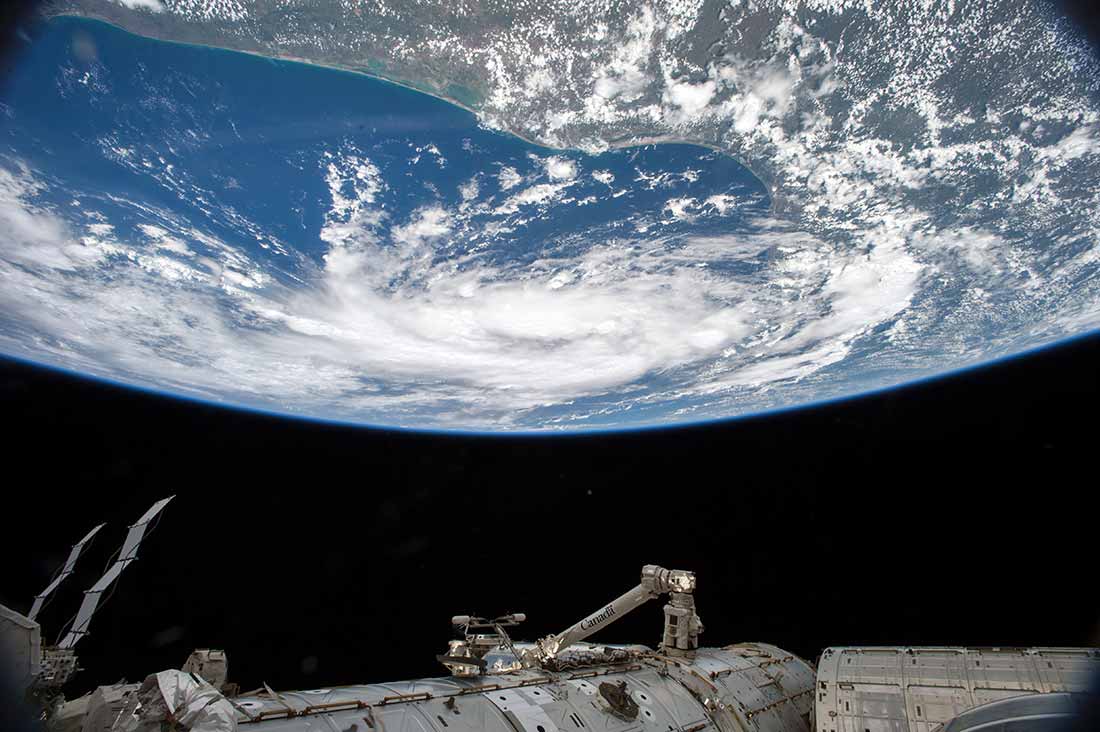By:
- Erika Johnson
Published Date
By:
- Erika Johnson
Share This:
Star Traveler
Astronaut, UC San Diego alumna Kate Rubins to rocket to International Space Station

The International Space Station. Photo by astronaut Scott Kelly/NASA.
Kate Rubins has always been starstruck by the night sky. Growing up, she attended star-gazing parties and plastered her room with images of faraway galaxies. In May 2016, Rubins’ long-held aspiration to travel to space will become a reality when she voyages to the International Space Station as part of Expedition 48/49. A biochemist and 1999 graduate of the University of California, San Diego, Rubins will help conduct more than 100 microgravity experiments to gain insight into how the mechanics of life happen outside of our planet.

NASA Astronaut Kate Rubins. Photo by Robert Markowitz/NASA Johnson Space Center.
The trip will be Rubins’ first journey into space. “I am excited to look down on the Earth from that perspective…to see whole continents and oceans. I have heard it takes your breath away.”
Building an extraterrestrial skill set
Anyone can apply to be an astronaut. But there are certain academic degrees and personal characteristics that stand out. Several decades ago, pilots and engineers were top choices for the space program, according to Rubins. Today, scientists—from the physical, life, biological or medical arenas—are selected more frequently. Yet all applicants must be willing to get out of their comfort zone.
“The standard saying is that aspiring astronauts have to be able to live in a tin can with five other people for six months,” said Rubins. “But truthfully, you have to be adaptable and open to learning new skills. Time and again you get thrown into the deep end of the pool. Working in a laboratory definitely did not prepare me for Navy flight school training.”
During astronaut candidate training, Rubins’ instruction included water and land survival techniques, SCUBA diving, Russian and Japanese language lessons and basic medical skills, as well as more advanced training, such as orbital mechanics, space station onboard systems orientation, use of the station’s robotic arm, Extravehicular Activity exercises (space walks) and regular flights on a T-38 jet, among other skills.
“Everyone on the team has to know how to do everything—pilots learn about scientific procedures and scientists are taught to be pilots,” Rubins explained. “The training helps us to practice responding under pressure quickly and accurately. For example, we were recently put into a capsule with a simulated fire; another day our vessel intentionally sprung an air leak.”
Even after years of thorough preparation, one aspect astronauts cannot fully rehearse is working in a microgravity environment. The closest simulation available is a parabolic flight, which involves a specialized aircraft flying in a series of 45 degree arcs, enabling passengers to experience temporary weightlessness at the top of each curve.

NASA Astronaut Kate Rubins, wearing a training version of her Extravehicular Mobility Unit, awaits the start of a spacewalk training session in the waters of the Neutral Buoyance Laboratory near NASA’s Johnson Space Center. Photo by Lauren Harnett/NASA.
“It takes weeks to adjust to living on the space station; you initially feel like you are falling or tumbling,” explained Rubins. “It is a real cognitive challenge because there is no up or down, you have to learn to utilize all three dimensions and convince yourself that you are stable.”
A floating laboratory like no other
Despite the challenges of working in a weightless laboratory, Rubins says the lack of gravity is what makes scientific experimentation on the International Space Station so valuable. The environment presents an opportunity to manipulate atmospheric pressure, gravity, temperature and more, revealing an entirely new perspective on basic biological and physical processes.
“We have only been conducting microgravity experiments for the last 50 years,” said Rubins. “It is exciting to be able to play with a completely new variable. My goal is to collect as much data as possible when I am there.”
The International Space Station was first launched over 17 years ago and serves as a home and workspace for astronauts from the U.S., Russia, Japan, Canada, Europe and more. The orbiting laboratory is used to conduct a constellation of studies in human health on Earth and in space, from aging and nutrition to bone and muscle deterioration to telemedicine and robotics. The station is permanently crewed by a minimum of six astronauts and circumnavigates the globe every 90 minutes—astronauts see a sunset or sunrise every 45 minutes—at 17,500 mph.
A resume full of adventure
Prior to joining the NASA team, Rubins led a 14-member laboratory at the Whitehead Institute for Biomedical Research at MIT. She and her team studied the genomics of deadly viruses with epidemic potential, including smallpox and Ebola. Her work extended into the Democratic Republic of Congo, where she led a study of human monkeypox infections.

NASA astronaut Scott Kelly, currently on a one-year mission to the International Space Station, took this photograph of Tropical Storm Bill in the Gulf of Mexico as it approached the coast of Texas, on June 15, 2015. NASA.
Although her love of space science has been a constant all of her life, Rubins also developed an interest in biology as a teenager, which was sparked after attending a conference on DNA at the Exploratorium in San Francisco. In high school she began to explore the possibilities of a career in public health prevention. As an undergraduate at UC San Diego, she studied biology and spent two years as a research assistant at the Salk Institute for Biological Studies investigating potential anti-HIV treatments. She went on to earn a doctorate in molecular biology at Stanford University and soon after launched her own research lab.
For students interested in a career in science, Rubins advises them to pinpoint exactly what excites them and follow that path. “Decide early on what you are passionate about, and find a good mentor who can help guide you to research opportunities, write recommendations and offer advice,” she says.
Reflecting on her professional trajectory thus far, she concedes that it has been unconventional, even perilous. Yet she is motivated by the chance to forge new frontiers in science.
“My career path has not been the safest; much of it is risky and inherently dangerous” she says. “Preparing for spaceflight and working with deadly viruses requires deliberate action, situational awareness and a lot of safety measures. Yet, I feel that it is worth the risk to further scientific knowledge and learn how humans live in space.”
Share This:
You May Also Like
UC San Diego is Strengthening U.S. Semiconductor Innovation and Workforce Development
Technology & EngineeringStay in the Know
Keep up with all the latest from UC San Diego. Subscribe to the newsletter today.



